Birds that mostly call
Decision table for identifying calls
| Bird | Description | Audio |
| one note | ||
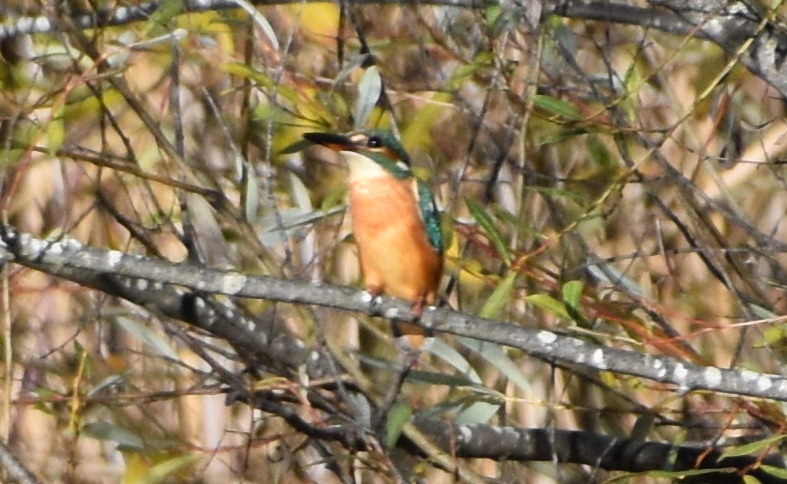 Common kingfisher ■■
Common kingfisher ■■ |
one note slow high (5-7 KHz) .
Common kingfisher call from Xeno-Canto, similar to one from NABU app.
Fairly high pitched single chirps or occasional high-low pairs.
Call: |
♫

|
| swoop | ||
|
|
swoop one note slow high (3-9 KHz) .
General: Single note repeated Song: |
♫
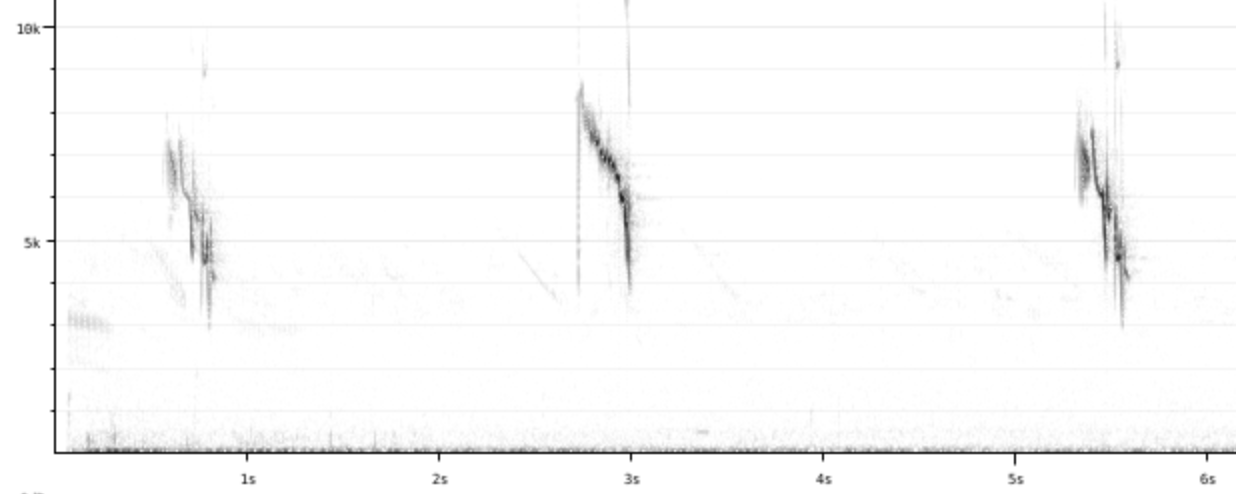
|
 Black woodpecker ■■
Black woodpecker ■■ |
one note slow low-high (1-8 KHz) .
General: A loud unearthly call on a single unwavering note.
Call: Flight call a characteristic resonant trill "krrreekrrreekrrreekrrree". A characteristic short, sharp and plaintive "keeaaa" with descending pitch often uttered when excited. A few slower drawn-out introductory calls before the phrase gets going is diagnostic. [Link] |
♫
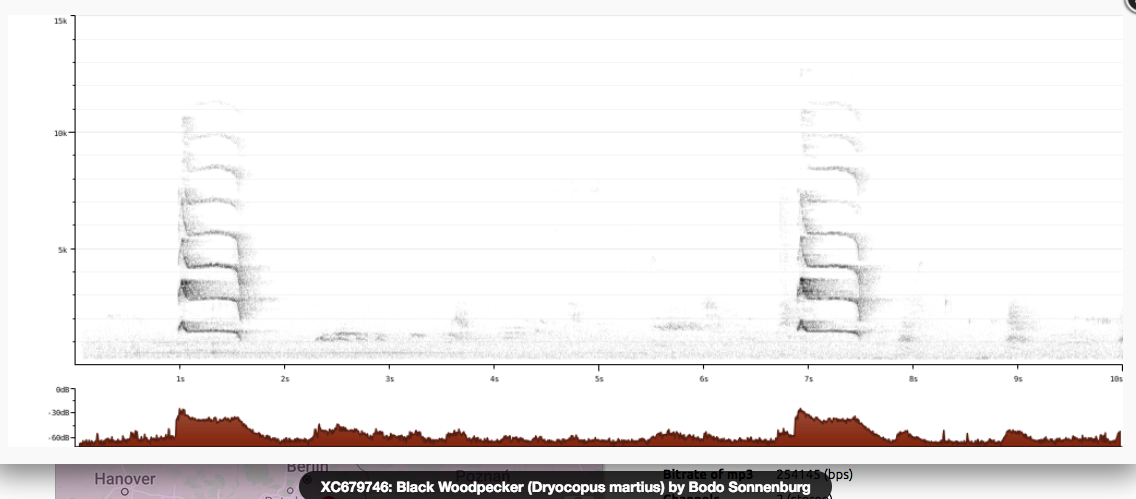
|
| simple rhythmic | ||
| Eurasian green woodpecker ■■ |
simple rhythmic slow high (3-9 KHz) .
Hysterical laughter. 7-8 loud urgent slightly falling notes, reminding me of George of the Jungle's dooky dooky bird for some reason.
Call: |
♫
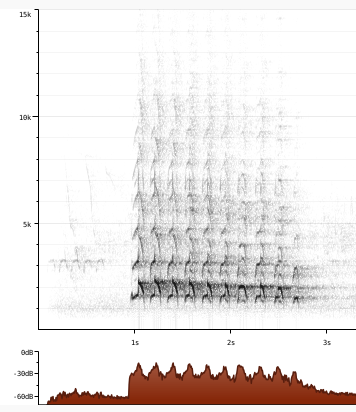
|
| one note | ||
|
|
one note slow low-high (1-8 KHz) .
General: A chirping (that I couldn't associate in my mind with a woodpecker), repeated at somewhat irregular intervals of about a second 2023: klang in bird-song.ch Quiz wie eine lauter Haussperling Call: Nabu: Der häufigste Ruf ist ein kurzes und spitzes „kix“. Ist ein Buntspecht aufgebracht, etwa durch einen Artgenossen, kann man ein schnelles Schnarren hören. [Link] Call: |
♫
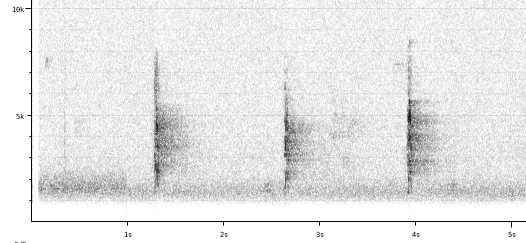
|
| stereotype melodic | ||
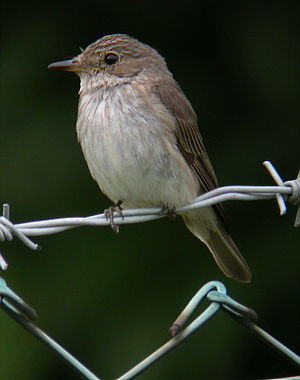 Spotted flycatcher ■■
Spotted flycatcher ■■ |
stereotype melodic slow high (4-7 KHz) .
General: To me something between a one-note and an extremely simple melody, namely med-med chk-hi-med-med, with a very irregular speed, not at all like a metronome. Call: |
♫
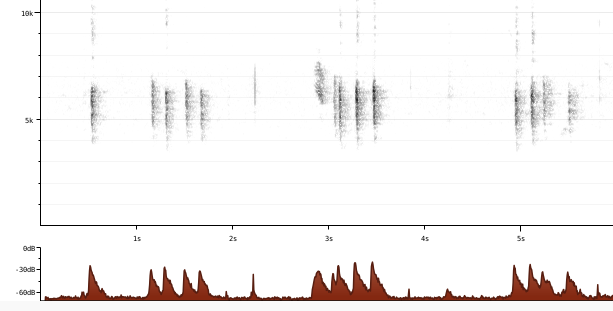
|
Practice
♫ Answer
Western yellow wagtail
♫
Answer
Western yellow wagtail
♫
 Answer
Spotted flycatcher XC656714 - Spotted Flycatcher - Muscicapa striata - Sounds similar to what I know.
♫
Answer
Spotted flycatcher XC656714 - Spotted Flycatcher - Muscicapa striata - Sounds similar to what I know.
♫
 Answer
Great spotted woodpecker Great spotted woodpecker call
♫
Answer
Great spotted woodpecker Great spotted woodpecker call
♫
 Answer
Eurasian curlew
♫
Answer
Eurasian curlew
♫
 Answer
Common kingfisher Call from Xeno-Canto
♫
Answer
Common kingfisher Call from Xeno-Canto
♫
 Answer
Eurasian green woodpecker
♫
Answer
Eurasian green woodpecker
♫
 Answer
Long-tailed tit Flight call from XenoCanto
♫
Answer
Long-tailed tit Flight call from XenoCanto
♫
 Answer
Black woodpecker Blood curdling call Source as noted in xeno-canto: Recordist Bodo Sonnenburg
2021-10-11 07:26
Latitude 52.2333
Longitude 13.8365
Location Oder-Spree (near Storkow (Mark)), Brandenburg
Country Germany
Elevation 40 m
♫
Answer
Black woodpecker Blood curdling call Source as noted in xeno-canto: Recordist Bodo Sonnenburg
2021-10-11 07:26
Latitude 52.2333
Longitude 13.8365
Location Oder-Spree (near Storkow (Mark)), Brandenburg
Country Germany
Elevation 40 m
♫
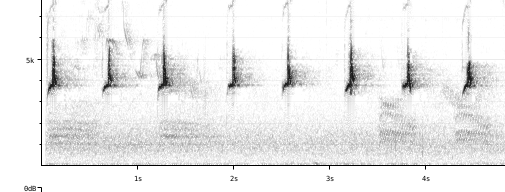 Answer
Common chaffinch Rain call from XenoCanto Recorded by Paul Driver in Mundford, Norfolk, UK
Answer
Common chaffinch Rain call from XenoCanto Recorded by Paul Driver in Mundford, Norfolk, UK
Birds with insufficient information about songs/calls
| Bird | Description | Audio |
 Eurasian tree sparrow ■■
Eurasian tree sparrow ■■ |
Call: | |
| simple rhythmic | ||
|
|
simple rhythmic slow high (3-9 KHz) .
- flight call |
♫

|
|
|
simple rhythmic slow low (1-3 KHz) .
- flight call |
♫

|
| one note | ||
| whoop | ||
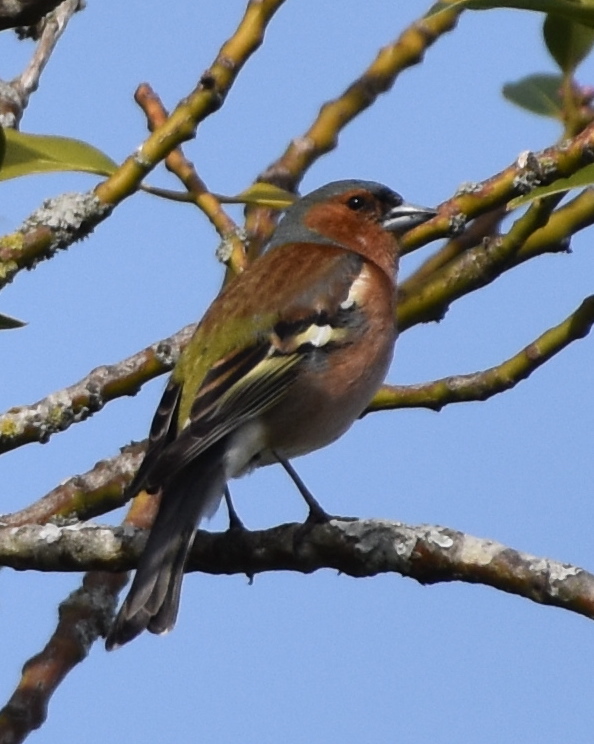 Common chaffinch ■■
Common chaffinch ■■ |
whoop one note slow medium (3-5 KHz) .
- rain callGeneral: Repeated ascending note, faster than the long starling whoops, but compare with the black redstart.
There are many different calls, the Marler book describes the 'chink' call as functioning as a mobbing and separation call.
At XenoCanto I find calls described as "ping", "pik" (same thing?), "pchew", "duit", "huit", "ti-huit". Call: |
♫

|